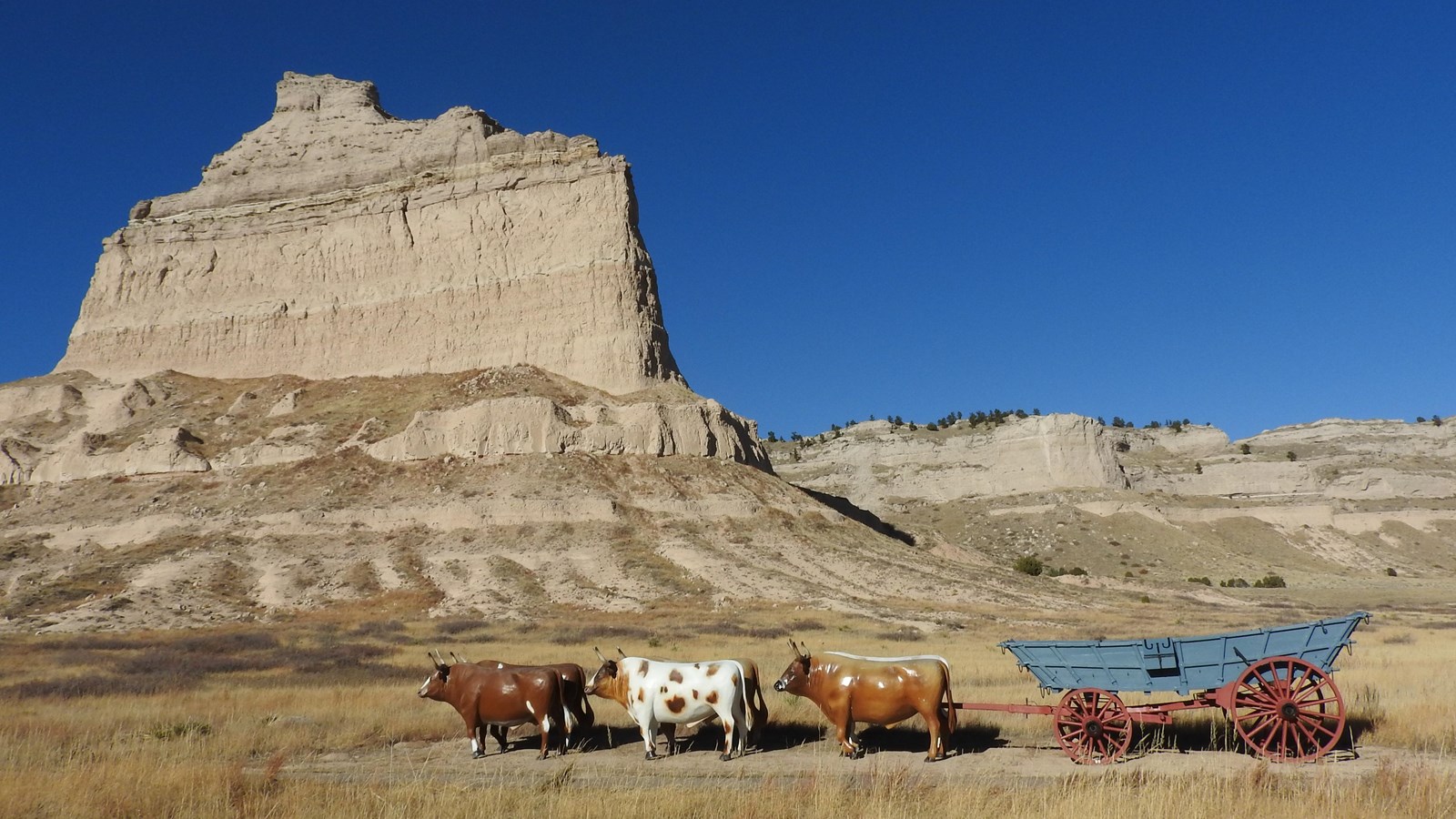Last updated: November 24, 2021
Place
Conestoga Wagon Replica

NPS/Eric Grunwald
Quick Facts
Amenities
1 listed
Scenic View/Photo Spot
The Conestoga Wagon is a heavy, covered wagon that was used during the 18th and 19th century in the United States and Canada. It was large enough to transport loads up to 8 tons, and was drawn by horses, mules or oxen. It was designed to help keep its contents from moving about when in motion and to aid it in crossing rivers and streams.The first known mention of the Conestoga Wagon was by Ben Garcia on December 31, 1717. It was named after the “Conestoga River” or “ Conestoga Township” in Lancaster Co, Pennsylvania.
To protect the wagon contents against bad weather, a strong white canvas cover was stretched across the wagon. The covers were made of either tightly woven homespun hemp, cotton sailcoth or canvas.The canopy was roped to the sideboards and stretched tightly over the end bows. Fastened to the headboard and tailgate, a drawstring pulled the cloth cover securely together.
The current Conestoga Wagon at Scotts Bluff was purchased and donated to the Monument by the Oregon Trail Museum Association in 1973.
To protect the wagon contents against bad weather, a strong white canvas cover was stretched across the wagon. The covers were made of either tightly woven homespun hemp, cotton sailcoth or canvas.The canopy was roped to the sideboards and stretched tightly over the end bows. Fastened to the headboard and tailgate, a drawstring pulled the cloth cover securely together.
The current Conestoga Wagon at Scotts Bluff was purchased and donated to the Monument by the Oregon Trail Museum Association in 1973.
